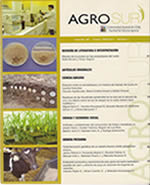Interaction between organic substrates of the southern region of the Ecuadorian Amazon and the presence of Eisenia foetida
Conteúdo do artigo principal
Resumo
This study aimed to evaluate the possible interaction between the chemical properties of some organic substrates of the southern region of the Ecuadorian Amazon and the development and reproduction of the red earthworm (Eisenia foetida), to obtain a bioproduct that can be used as organic fertiliser by producers of the region. The treatments used in the experience were: domestic organic waste (DOW), guinea pig excreta (GPE) and sugar cane waste (SCR), the control (CT) was a clay loam soil from the area. The chemical characterisation of the substrates was carried out before and during the introduction of the earthworms. After the pretreatment period (15 days), 30 individuals of E. foetida were placed in each bed, totalling 360 individuals. Initially, all the substrates showed low nutritional contents, as well as high C/N ratios, a trend that was maintained until the end of the experiment. After 25 days of composting, it was observed that the GPE treatment showed a pH close to neutrality, as well as greater nutrient availability. GPE and DOW were the organic residues with the best conditions for the development of E. foetida. After 45 days of the introduction of the earthworms, the vermicompost obtained could already be used as organic fertiliser, given the availability of nutrients.

